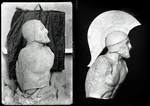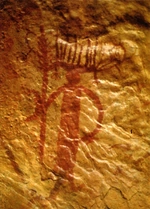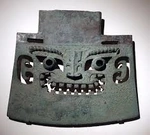Ancient Greece, Or Diversity Of Similarity...
It is a very interesting question, how even things so different in their characters and objects, what we are observing at first glance, may be so similar in shapes?.. As you guessed, this chapter we devote to Greece Poleis, and their measurement systems.

Introduction To Understanding The Greece Poleis
Usually, a regular reader finds the understanding of the City-State of Ancient Greece mostly unclear, and this vagueness has its roots in a well-developed habit of thought — an attempt at bringing all abstract things (or objects) to some well-understood definitions, aiming to build a comparative pattern that will comfortably align with an already existing one. But such generalization, in some cases, leads to definitely wrong strategies that scientists define as basic methodological errors.
For a more accurate perception, let’s establish some fundamental definitions. The State, in Ancient Greek times, cannot be perceived in the same sense as a modern State. Rather, it should be viewed as a micro-empire structure, where the City served as a metropolis, and all neighboring territories were more like its colonies under the protectorate of that metropolis. This also influenced the structure of society. Citizens of the City had all rights (depending on their social status), while all inhabitants of the protected territories were obliged to obey the laws of the polis but had no rights as members of the City’s social unit. This analogy roughly depicts the reality of the polis as a state.
And now you may notice one remarkable feature of the polis: when some establishment becomes conscious of its own power and is well self-regulated, there is scarcely to be found any desire to share authority, power, or rights. And that is one of the reasons why the poleis remained separate in their social organisation of states and did not form a single unified State, as Egypt once did — though the initial conditions of predynastic Egypt were, in many ways, very close to those of Ancient Greece.
Curiosity Of Stereotipsation, Or Each Poleis With Own Measurement System
Unusual as it may sound to our honorable reader, each polis had its own measurement units. And you may reasonably appeal that there was well-developed trading and a system of communications between the poleis, and such activity critically required unification. The same may be emphasized regarding the importance of the famous Olympic Games, where distance, weight, and volume were required to be standardized.
In such cases, humanity has a great tool — perhaps you know it — we call it a language. By the way, we mention language here not as a simple beautiful word, but as a reminder of the thesis we declared in the paragraph above. And linked to that wrong patternalization, here you may see the error: as an ununified language among neighboring countries today, you still expect unification of measurement units among the Ancient Greek city-states...
If you are interested to read about Ancient Greece's general economy overview, visit this publicationHere Authors Desided To Embed A Short Review Of Greece Region Evolution
Minoan Crete (pre-Greek / early Greek influence)
Major Centres: Knossos, Phaistos, Malia, the structure at that time, shped as complex palace-centred societies; not strictly “city-states” in the Classical sense. Centralized economic, religious, and administrative authority. Sources support us with measurement data; linear: Minoan cubit ≈ 0.523 m (estimated from palace architecture and storage vessels), volume: Standardized units inferred from storage jars (amphorae, pithoi)
Period: 3000–1450 BC
Our recommendations to read: Evans, Arthur. The Palace of Minos (1921–1935)Mycenaean Greece (Late Bronze Age)
Major Centres: Mycenae, Pylos, Tiryns, Thebes
Establishments characteristic: linear palace-centred authority; centralized taxation and resource collection, proto-bureaucratic. Measurement Units: Linear: Estimates suggest cubit ~0.46–0.50 m, based on architectural remnants Area: Land measured in plethra (from later Greek usage, inferred from Linear B tablets)
About the period, in details we recommend read: Ventris & Chadwick, Documents in Mycenaean Greek (1956)Archaic Greek Poleis
Major City-States: Athens, Sparta, Corinth, Megara, Argos
Period: 800–500 BC
State Structure: Athens: Early monarchy → aristocracy → archon system → democracy foundations, Sparta: Dual kingship + Gerousia (council of elders) + Apella (citizens assembly). Each polis had its own political organisation, laws, and coinage.
Measurement Units: length: Greek foot (pous) ~0.308–0.312 m (regional variations), Cubit (pechys): ~0.462–0.468 m, Stadion: ~600 feet ≈ 180–185 m (used in athletics, military drills, and land measurement)
To read about Greece more: Sacks, David. Encyclopedia of the Ancient Greek World, Revised Edition. New York: Facts On File, 2005. ISBN 0-8160-5722-2.| Unit | Approx. Metric | Notes / Usage |
|---|---|---|
| Pous (foot) | 0.308–0.312 m | Common linear measure in classical poleis |
| Pechys (cubit) | 0.462–0.468 m | Construction, larger linear measures |
| Stadion | 180–185 m | Athletics, land surveys, military marches |
| Plethron | ~100 m² | Land area |
| Choenix | ~1.08 L | Grain measure |
| Drachma | ~4.3 g silver | Weight and currency |
We Promised...
| Athen Measurements | Linear Units: Pous (foot): 0.308 m, Pechys (cubit): 0.462 m (~1.5 pous), Stadion: 600 feet ≈ 184.8 m |
| Area Units: Plethron: ~100 m² (used in land allocation), Stremma (later usage, from Roman/Byzantine adaptation): 1000 m² | |
| Volume Units: Choenix: 1.08 L (grain), Metretes: ~39 L (liquid measure) | |
| Weight Units: Drachma (silver coin, weight standard): ~4.3 g, Talent: 26 kg silver | |
| Sparta | Linear Units: Pous: 0.308–0.310 m, Pechys: 0.462 m, Stadion: ~180 m (used in military and gymnastic training) |
| Area Units: Plethron: ~100 m² | |
| Volume Units: Choenix: 1.08 L, Kyathos: ~0.03 L (smaller measures for liquids) | |
| Weight Units: Drachma: ~4.3 g, Obol: ~0.72 g (1/6 drachma) | |
| Corinth | Linear Units: Pous: 0.308–0.310 m, Pechys: 0.462 m, Stadion: 180–182 m |
| Area Units: Plethron: ~100 m² | |
| Volume Units: Choenix: ~1.08 L Metretes: ~39 L | |
| Weight Units: Drachma: 4.3 g, Obol: 0.72 g, Talent: 26 kg | |
| Delphi / Phocis (Sanctuary and regional polis) | Linear Units: Pous: 0.308 m, Pechys: 0.462 m |
| Area Units: Plethron: 100 m² (temple lands, sacred precincts) | |
| Volume Units: Choenix: 1.08 L, Metretes: 39 L | |
| Weight Units: Drachma: 4.3 g, Obol: 0.72 g | |
| Syracuse (Sicilian Greek colony) | Linear Units: Pous: 0.303–0.308 m (slightly shorter than mainland), Pechys: 0.462 m, Stadion: ~180 m |
| Area Units: Plethron: 100 m² | |
| Volume Units: Choenix: 1.08 L, Metretes: 39 L | |
| Weight Units: Drachma: 4.3 g, Obol: 0.72 g, Talent: 26–27 kg (local variation) | |
| Summary. | As shown in listing of units, the difference mostly reflects in values. |
| Suffixing by polis: Often units had the city name appended in inscriptions or coinage (drachma syrakousios, pous athenaion). | |
| Regional variations: Even when the unit name was the same, the metric value could differ slightly (Athens foot 0.308 m vs. Syracuse 0.303 m). | |
| Specialized units: Some cities had additional local units for construction, trade, or religious purposes (e.g., megalos pechys for temple constructions). |
The Greece culture (more correct Hellenian) had its impact on world's science, and philosophy, but significantly later. The first aloud sound was belled at the Alexander The Great conquests, but it was a very short period. Cultural interchanging processes usually require a significant time-gap, as those all have evolutionary characteristics rather than instant implementation. But if we take into account, distal in time, the Rome prosperity as an empire period, it will definitely be traceable the Hellenistic impact to a wide range of this mentioned here state. And in its turn, in a collateral way, this impact feels very well within all subordinated to the Roman Empire cultures, and territories.
The process of the end of Hellenistic civilisation started from the destroying the concept of independances the City states, which took place with Philip II Of Macedon (Father of Alexander The Great).
Prehistory of Philip II of course may be perceived as conditional, and in aim to show for spectator the picture in panoramic exposition, authors here will let some historical observations.
Internal weakening of the poleis, conditioned by events like Peloponnesian War (431–404 BC), Rise of Thebes (4th c. BC) (temporary domination under Epaminondas after Spartan decline, but no lasting unified control), and, for example, political fragmentation: Most poleis became weaker, constantly at war with neighbors, unable to form a cohesive defensive strategy.
The decaying processes continuing with Macedonian conquests, which starts from gradually imposing hegemony over Greek city-states through diplomacy and military campaigns by Philip II. Significant point from the chain of historical events becomes the Battle of Chaeronea (338 BC) (Philip defeats Athens and Thebes, effectively ending Greek political independence). Alexander The Great had hammer the final nail into the coffin lid of the Hellenistic social structure in Greece, by complete deprivation of poleis autonomy. Surely, he Extend Greek culture across the Near East. May be obvious that all Greece poleis should become a central core of the potentially rising Macedonian empire (mostly covered Antigonid Macedonia with conquered Ptolemaic Egypt, Seleucid Empire), but established cultural, and social structure of the poles were incompatible with governmental principles required to build, and later maintaining such construct as an Empire.
Such a way, Greece's glory wilting, with rising lights of the Roman empire, and become a Roman province. Poleis survive as cultural and economic centres, but no longer sovereign states.
And here will be justified place to pass the Roman measuremental approaches, and the background researching chapter...
For more complex review: Greek and Roman Architectural TheoryThis article is part of a long-read publication. [Go to the full version →]







This chapter devoted to two cultures, Babylonia and Persia, and here uncover why...

And here the place we should turning backward, to culture, already passed but under other angle...






